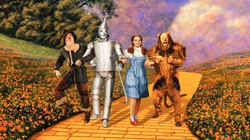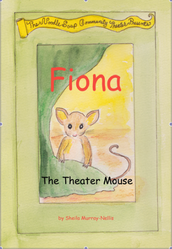Characterization is the art of creating characters. This is done by not only creating their physical attributes, but also their motivations, personalities, thoughts, and feelings. Characters can range from animals to aliens, but most seem to be people who may be similar to you or someone you know. I'm a "people" character-maker. I like to create characters that are human, which is probably because it is most relatable to me and in some cases can be the easiest to flesh out.

Characterization: Types of Characters
by WordGirl26
Need to organize your characters by their importance in your story? Find out here to give your characters their proper "acting roles." ;)
What's your label?
Characters are the glue that keeps plot together. I personally like creating characters the most when it comes to writing because they are literally the actors of the show. Just think, a story would be pretty boring or kind of short without them and only a setting involved.
It was a dark and stormy night. The lighting flashed and the thunder rumbled. The End. Lol :p I mean, Where's the real action? Where's the suspense? Where's the fight to succeed? This is why characters are important, and something which can also important (particularly for novels of plays) is knowing the importance of each of your characters. Just like we all have roles in life, our characters more than likely should to, in order to differentiate between them and to make sure we aren't sharing more on a particular character than what is needed. For example, characters who says only one line or is seen once in the entire story should not have a whole chapter written about them, especially if it adds nothing to the main plot or any subplot in the story. There are two main groups of characters which are the major characters and minor characters.
MAJOR CHARACTERS
Major characters are characters which play larger roles within your story. These characters are often called main characters or lead characters. For example, Dorothy from The Wizard of Oz by L. Frank Baum, or Celie in The Color Purple by Alice Walker. Major characters are the main ones talked about, and sometimes the one who tells the story to the reader if in first-person point of view.
MINOR CHARACTERS
Minor characters are characters that play smaller roles within your story. These on the other hand are often called secondary characters. Some examples of these are Aunt Em in The Wizard of Oz or Helen Thermopolis in The Princess Diaries.
GOOD GUY VS. BAD GUY
Two of the most important characters are the protagonist (the hero) and the antagonist (the villain). The protagonist is the character who solves or strives to solve the problem of the story, and the antagonist is the character who hinders the problem from being solved, sometimes unintentionally, like an overprotective mother who wants the best for her son, but keep interfering with his relationships with women, for example.
SUPPORTING CHARACTERS
From time to time, we need supportive people in our lives, and sometimes our characters may too. Supporting characters are my personal favorite. These characters can range from best friends to sidekicks, and usually helps your protagonist solve their problem of the story. For example, Dr. Watson in the Sherlock Holmes mysteries.
All of these characters and many others can be important when writing your story, and depending on how well they're fleshed out can impact how your plot develops.
THE NEXT POST: CHARACTER EMOTION. Do you want to show your characters emotions instead of telling them? Stay tuned to find out. 😉
You might also like
How to Self Publish a Children's BookDeciding to self publish a children's book may seem simple, but there are man...



 How to Write Realistic Character Dialogueon 10/07/2014
How to Write Realistic Character Dialogueon 10/07/2014
 Characterization: Setting is a character tooon 09/22/2014
Characterization: Setting is a character tooon 09/22/2014
 Characterization: Character Emotionon 09/18/2014
Characterization: Character Emotionon 09/18/2014
 The Stages of a Storyon 09/12/2014
The Stages of a Storyon 09/12/2014

Comments